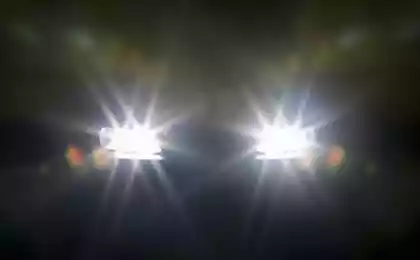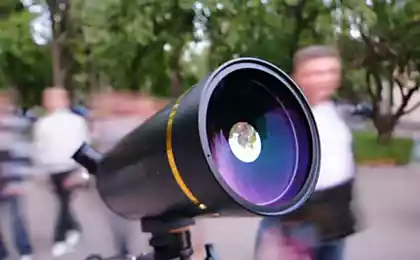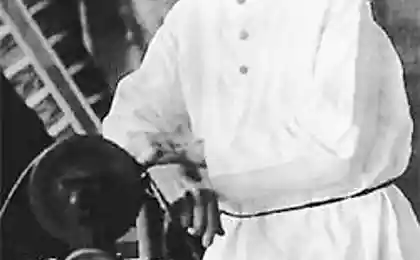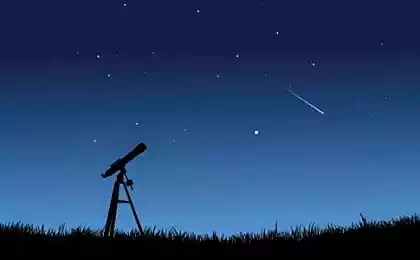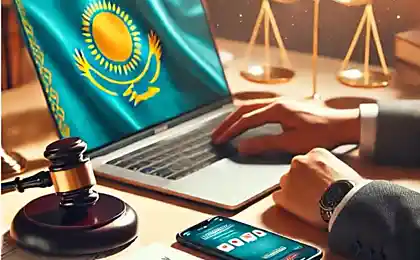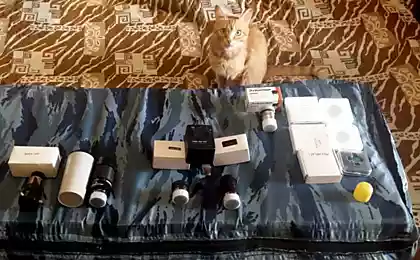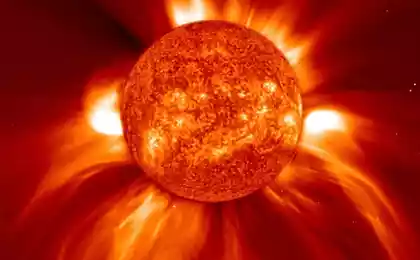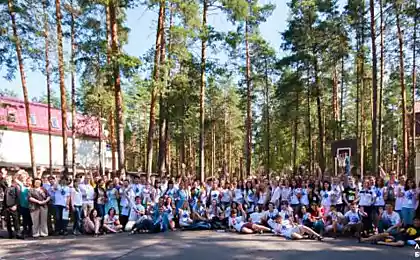1345
Sun Service
A long time ago, I noticed that on the Hub no articles about the observatory. There are articles about telescopes, about satellites, about asteroids. But the article on how to construct habitats astronomers - no. Yes there! Once there was a lot of articles about the offices of major IT-companies, which are reduced to where what candy fed, where it is more convenient selection of chairs, where what computers use. But even in these papers do not mention the observatory. But, in my opinion, much more interesting to look at a bunch of monstrous works of human genius than compare lunch programmer Google and Apple.
Periodically, I get to travel to various observatories. I wanted to eliminate the above-described misunderstanding and write a short story on this topic. The article is devoted Ussuri Astrophysical Observatory ( UAFO FEBRAS ), which is the largest observatory in the Far East. Residents of the Primorsky Territory, it is likely a good idea is familiar, but I think that will be curious to read the rest.
The observatory is located near Ussuriysk (20 km), but it has a good astroclimate: highlights from the nearby town is minimal. Taiga is located very close to the observatory. They say that sometimes even tigers stroll.
The Observatory was created in 1953 for regular observations of the Sun and solar activity. Then the Soviet Union has a unique advantage, which was not anybody in the world - he was able to follow the sun from its rising in the Far East and the sunset in Kaliningrad. Now, when the same task can be performed by several satellites (SOHO and STEREO) observatory is rather base uniting researchers Sun with specialized tools that allow you to receive real-time data.
Recently observatory was retrofitted and now solves problems observing asteroids, satellites and gamma-ray bursts.
Just обсерватории there are dozens of tools, of which 2/3 are in active operation.
I myself am not familiar with the physics of the sun, and even more so with technical tricks, initiates the process of observation and data collection. So I apologize in advance for inaccuracies and simplifications.
Horizontal solar telescope. H4> One of the oldest observatory instruments, this horizontal solar telescope . His appearance surprised person not familiar with astronomy. But it is necessary to take into account that the Sun goes on a predictable trajectory almost identical every day. Uzkozatochenny tool should not have the whole breadth of capability required of an ordinary telescope.
Spectrograph-coronagraph (without the eclipse Korongraf). H4> It has a slightly different scheme, more similar to the familiar telescope. Its main task - the analysis of the spectrum of the corona of the sun. Equipment slightly newer, but lately he is also not used.
Another spectrograph h4> The reader, who moved through the first two spectrograph asked in surprise, "why not upgrade these spectrographs not saturate them with modern equipment, do not lead to a job?". But ... It's too expensive, difficult and unnecessarily. You know it looks like a modern solar spectrograph? Here it is:
Solar Telescope (Coude refractor) h4> But spectral telescopes are not the only telescopes that are installed in the observatory. In a number of observatory telescopes for conventional optical observation of the sun. The first is this one telescope:
Solar Telescope (with H-filter) h4> In addition, the observatory has a telescope that performs constant observation of the sun through the hydrogen filter. This method allows us to observe the chromosphere of the sun, eliminating the influence of the photosphere. With such a filter can be regarded prominences and the dynamics of the upper layers of the sun. And getting such awesome pictures .
Astrography h4> We return to the old technique. Who lives in this house?
Modern telescopes h4>
Radio telescopes h4> In the observatory has two radio telescope. One sunny working:
Other little things in life h4> I must say that in the component life significantly loses Observatory and Google and Yandex :) on the distant hill is difficult to hold steady water, internet and electricity. Everything is there, but is unstable. Do not defeat the observatory and the competition more delicious cookies.
Periodically, I get to travel to various observatories. I wanted to eliminate the above-described misunderstanding and write a short story on this topic. The article is devoted Ussuri Astrophysical Observatory ( UAFO FEBRAS ), which is the largest observatory in the Far East. Residents of the Primorsky Territory, it is likely a good idea is familiar, but I think that will be curious to read the rest.
The observatory is located near Ussuriysk (20 km), but it has a good astroclimate: highlights from the nearby town is minimal. Taiga is located very close to the observatory. They say that sometimes even tigers stroll.
The Observatory was created in 1953 for regular observations of the Sun and solar activity. Then the Soviet Union has a unique advantage, which was not anybody in the world - he was able to follow the sun from its rising in the Far East and the sunset in Kaliningrad. Now, when the same task can be performed by several satellites (SOHO and STEREO) observatory is rather base uniting researchers Sun with specialized tools that allow you to receive real-time data.
Recently observatory was retrofitted and now solves problems observing asteroids, satellites and gamma-ray bursts.
Just обсерватории there are dozens of tools, of which 2/3 are in active operation.
I myself am not familiar with the physics of the sun, and even more so with technical tricks, initiates the process of observation and data collection. So I apologize in advance for inaccuracies and simplifications.
Horizontal solar telescope. H4> One of the oldest observatory instruments, this horizontal solar telescope . His appearance surprised person not familiar with astronomy. But it is necessary to take into account that the Sun goes on a predictable trajectory almost identical every day. Uzkozatochenny tool should not have the whole breadth of capability required of an ordinary telescope.
The tool is designed for the observation of sunspots and their spectral analysis.
Now it is not used. And optics and the analyzing part is already obsolete and outdated. But that does not make them any less interesting!
The building is similar to anything, even to the garage, but not on the telescope. The metal part slides down the rails. Under the metal part has two adjustable lenses allow you to monitor the movement of the sun. Lower the lens reflects the sun at the top and the top in the hole in the wall.
Schematically, the beam comes on such a trajectory:

The image of the sun is redirected into the building, walking distance of the order of 15 meters and a reflective diffraction grating. then comes back, where there is a reflector that redirects the beam into the next room, where it is a more detailed analysis.
Hole from which comes the image of the sun. Slightly to the left, in the bell visible reflector, the beam is redirected back to the hall where the analysis.
But so is the diffraction grating. By the way, note the color of the walls? Black he specifically - to minimize interference. When the experiment went, all the lights turned off.
The camp of the hall is a wonderful lot of tube equipment, whose age is a little over.
Spectrograph-coronagraph (without the eclipse Korongraf). H4> It has a slightly different scheme, more similar to the familiar telescope. Its main task - the analysis of the spectrum of the corona of the sun. Equipment slightly newer, but lately he is also not used.
Rod is induced in the sun, and leads him. In the bar there is a special plate that allows outshine the sun, leaving only the crown. Image of Crown assigned to the basement where there is analysis equipment.
Slightly more detailed description of the action: without the eclipse coronagraph consists of a main lens O, building a solar image on a metal disk D, which does not pass on the light of the photosphere and thus creates an artificial eclipse. To eliminate the scattered light appears as a result of diffraction from the edge of the main lens for metal screen is placed lens O ', which builds an image of the main lens aperture in the hole small enough so as not to miss the edges of the image of the main lens. Next object O & quot; build the final image of the corona or prominences on the spectrograph slit or on photographic film PV
Another spectrograph h4> The reader, who moved through the first two spectrograph asked in surprise, "why not upgrade these spectrographs not saturate them with modern equipment, do not lead to a job?". But ... It's too expensive, difficult and unnecessarily. You know it looks like a modern solar spectrograph? Here it is:
The white part of the booth leans. Small telescope sends the image to a black box, where the spectrum analyzers.
However, he is served by one operator receives the result immediately, it allows you to quickly analyze and transmit to the consumer. Incidentally, the spectrograph belongs RosHydroMet and yet commissioning.
Exact specifications in all spectrographs to find out I could not, but I think on some experience, they do not have much of modern worse, and possibly better.
Solar Telescope (Coude refractor) h4> But spectral telescopes are not the only telescopes that are installed in the observatory. In a number of observatory telescopes for conventional optical observation of the sun. The first is this one telescope:
The telescope is an example of exactly what is quite old telescope, can be used with quite modern matrices. By the way, note the interesting scheme: the image comes to the part of the pipe, which is located on top, and is fixed on the bottom left.
Solar Telescope (with H-filter) h4> In addition, the observatory has a telescope that performs constant observation of the sun through the hydrogen filter. This method allows us to observe the chromosphere of the sun, eliminating the influence of the photosphere. With such a filter can be regarded prominences and the dynamics of the upper layers of the sun. And getting such awesome pictures .
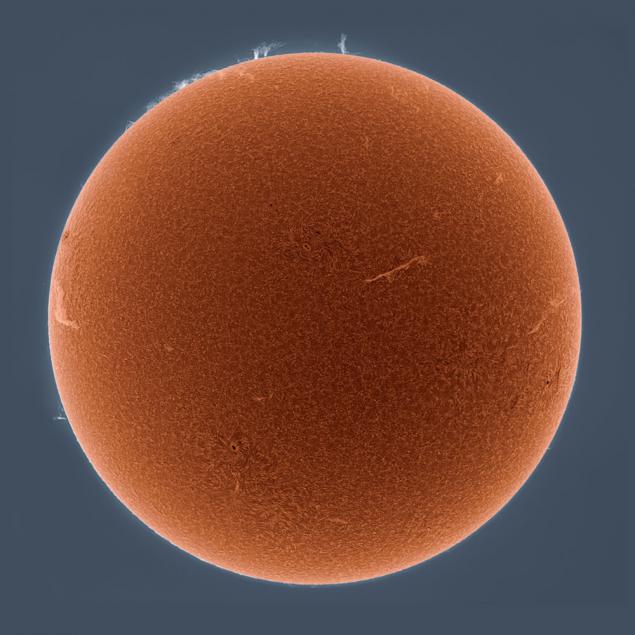
Astrography h4> We return to the old technique. Who lives in this house?
In this house lives astrograph. Unfortunately, a little late with his era. Bought before perestroika, he was very modern at the time. But soon perestroika began, there was no money, there was no photographic plates for him. And when the money came he already morally outdated: the era figures.
The first question that I have escaped, "and why it two pipes?". The answer turned out to be unusual for me, a man with a digital camera. It turns out that in the exposure of photographic plates is likely to get a "line of pixel" point to a local or Peresvet nedosvetom. To neutralize such artifacts used systems to simultaneously exhibit two identical photographic plates to the same region of the sky. But where to put the photographic plate:
The second miracle of this telescope is located in these drums and in this setting:
This automatic guidance system, modern enough at the time. Drums arranged encoders on Gray code , and a box - a computer control .
Gray code - a number system in which two successive values differ in only one digit. Originally intended to protect against false positives electromechanical switches. In an optical telescope uses Gray code in drums. The sensor reads the current position and allows zooms to the starry sky automatically to within a second of arc.
Unfortunately, the telescope morally obsolete. Nobody now no need of photographic plates or narrow field telescope or higher resolution field in the plane of focus. Today's telescopes looks like this:
Modern telescopes h4>
All three of these telescopes is much smaller, simpler, smaller and more efficient monstrous astrograph with pictures above. Today, they are used to observe gamma-ray bursts, asteroids, comets and high-altitude satellites. Two large not only provide a larger field, but also the best sensitivity.
50-inch telescope.
60-cm telescope + 20santimetrovy telescope.
For these telescopes very effectively solved the problem of the project ISON , as well as warnings about the asteroid and comet hazard. discovered a number of asteroids .
Radio telescopes h4> In the observatory has two radio telescope. One sunny working:
And second, military gift, which has not yet been launched, but very eager.
Other little things in life h4> I must say that in the component life significantly loses Observatory and Google and Yandex :) on the distant hill is difficult to hold steady water, internet and electricity. Everything is there, but is unstable. Do not defeat the observatory and the competition more delicious cookies.
But here is beautiful. Around the taiga, cedar pine, overgrown with vines and actinides (younger brother kiwi). At night, heard wild boars and other animals. Sometimes, they say, are a number of tigers. End of the day marks the dawn and the mist covering the hills. In the city the largest observatory in the Far East Arboretum.
Why coolers with Coke and coffee tables with cookies when a break between work you can go for a walk into the forest ?!
ZJ Many thanks to Alex for the tour! If you have an opportunity to talk more about some observatory whether to do it?
| need. |
| Well nafig. They are all the same. Only registered users can vote in polls. Sign , please. 188 people have voted. 17 people abstained. Source: habrahabr.ru/post/236773/ |
Flight to Mars: non-Hohmann transfer orbit, aerotormozhenie complexity and landing in the rarefied atmosphere
In Hamburg presented drone to deliver goods by sea: a robotic barge with electric motor




